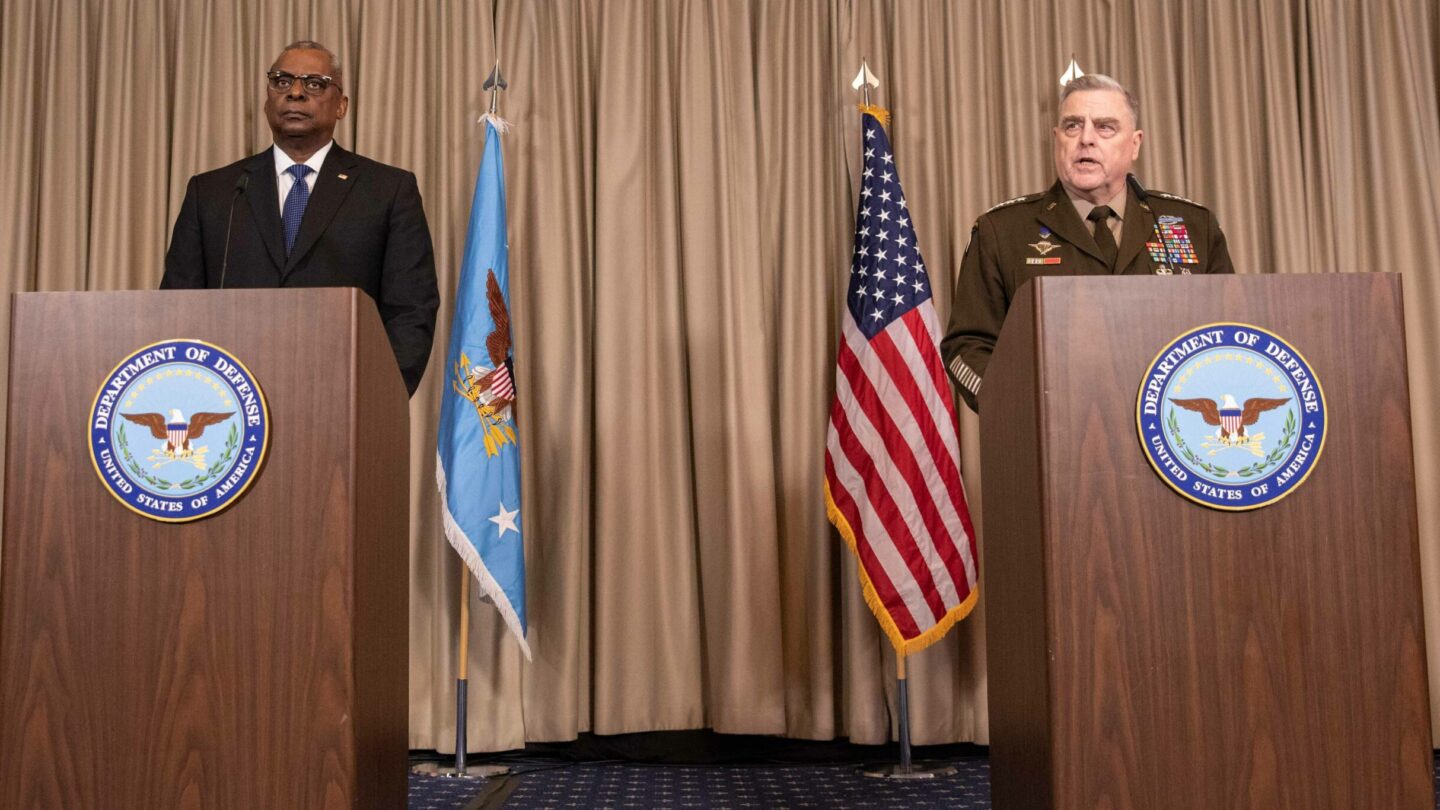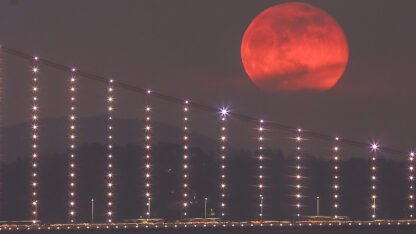The U.S. and other NATO countries say they will ship a huge, wide-ranging package of heavy weapons to Ukraine, sending a clear signal that the war with Russia is expected to escalate in the months ahead.
“This shows our long-term commitment to supporting Ukraine against Russia’s unprovoked aggression,” U.S. Defense Secretary Lloyd Austin told a news conference Friday in Ramstein, Germany, after some 50 countries met to discuss Ukraine’s military needs.
The combined Western assistance will include more than two dozens different types of hardware. The key elements will give Ukraine additional air defenses — to guard against Russia’s ongoing missile strikes — and new armored vehicles — which could help the Ukrainians with an future offensive against Russian ground troops.
One thing Ukraine wanted, but will not be getting in large numbers, is tanks.
Britain recently announced it will send more than a dozen of its Challenger 2 tanks. But Ukraine says it needs at least a couple hundred tanks, and neither the U.S. nor Germany will send their top-line models, which Ukraine has been pleading for.
When asked about tanks, Austin said the aim was to provide Ukraine with the overall resources to carry out operations as soon as possible.
“This is a very, very capable package,” Austin said of the weaponry headed to Ukraine. “If employed properly, it will enable them to be successful.”
The Pentagon says the main U.S. battle tank, the Abrams, requires significant training and maintenance, and it uses jet fuel, rather than the more widely available diesel fuel.
Germany has come under growing pressure to supply Ukraine with its Leopard 2 tanks, considered among the best in the world. But Germany’s new defense minister, Boris Pistorius, said Friday that the country was still reviewing its stockpile of tanks.
“We cannot say today when a decision will come and what it will look like,” Pistorius said.
Strong Western support continues
Ever since the Russian invasion last February, there’s been persistent talk that Western support for Ukraine could falter as the war grinds on. But Friday’s announcement indicated that support — at least when measured in military hardware — remains extremely strong.
This comes amid growing speculation that Ukraine, or Russia, or both, are planning to launch military offensive in the near future.
The U.S. package includes more than 20 separate military systems valued at $2.5 billion. This is the 30th tranche of U.S. military assistance since August 2021, and the only one larger was a $3 billion assortment of weapons announced just two weeks ago.
The U.S. equipment includes more than 500 armored vehicles such as Bradley Infantry Fighting Vehicles, Stryker Armored Personnel Carriers and MRAPS that are resistant to landmines.
All these armored vehicles could be used by Ukraine in the heavy fighting currently underway the Ukraine’s eastern Donbas region, or in ground offensives in other parts of the country occupied by Russian forces.
Several other European countries also announced significant support for Ukraine, including a range of air defense systems and armored vehicles.
Right now, the fighting in Ukraine is most intense in and around the eastern town of Bakhmut, which has been contested for months. In addition, the Russians regularly unleash air strikes in an attempt to knock out Ukraine’s energy systems in cities throughout the country.
Many analysts predict the fighting will increase in the late winter or early spring, with either or both sides launching offensives.
U.S. Army Gen. Mark Milley, the chairman of the Joint Chiefs, appeared alongside Austin at Friday’s news conference.
He said he expected heavy fighting ahead, but reiterated his belief that the war will ultimately end with negotiations.
“From a military standpoint, I still maintain it will still be very difficult to eject all Russian forces from Ukraine,” Milley said. “This doesn’t mean it won’t happen, or can’t happen. But I do believe this war, like many wars, will end at the negotiating table.”
Milley said Russian leader Vladimir Putin could end his “war of choice” today by withdrawing Russian troops from Ukraine.
However, Russia has indicated it plans to mobilize additional troops in the near future.
Kremlin spokesperson Dmitry Peskov said Friday that “we see a devotion to the dramatic delusion that Ukraine can succeed on the battlefield.”
Copyright 2023 NPR. To see more, visit https://www.npr.org.
9(MDAxODM0MDY4MDEyMTY4NDA3MzI3YjkzMw004))

9(MDAxODM0MDY4MDEyMTY4NDA3MzI3YjkzMw004))








